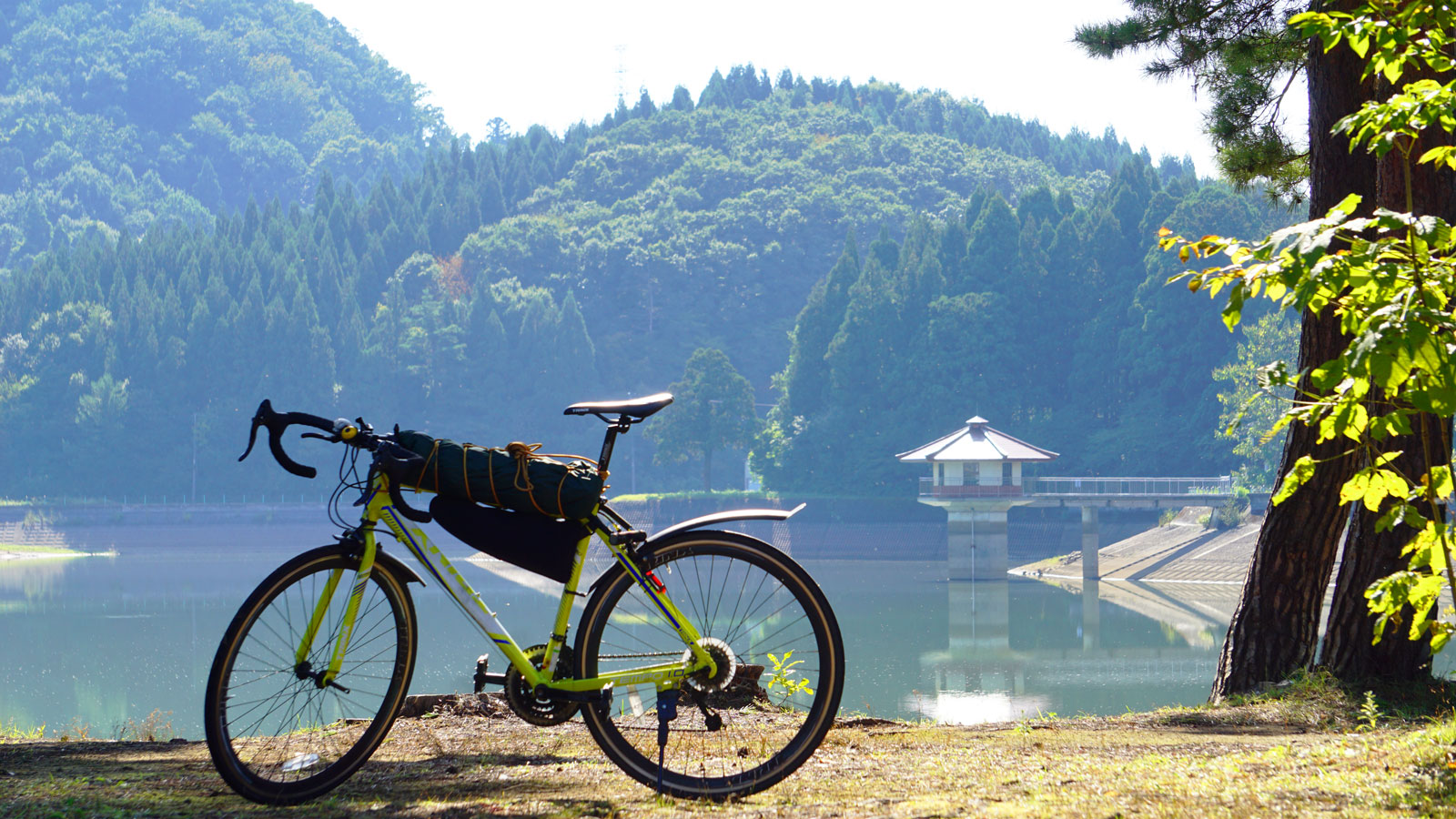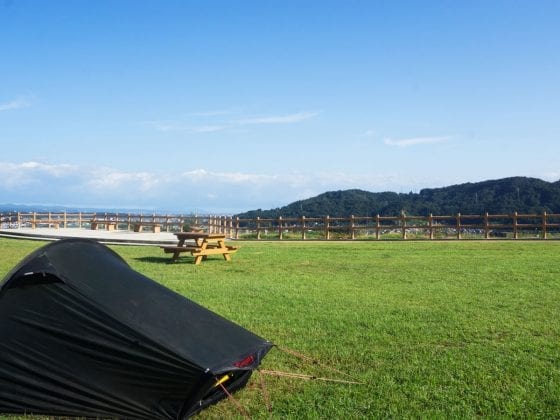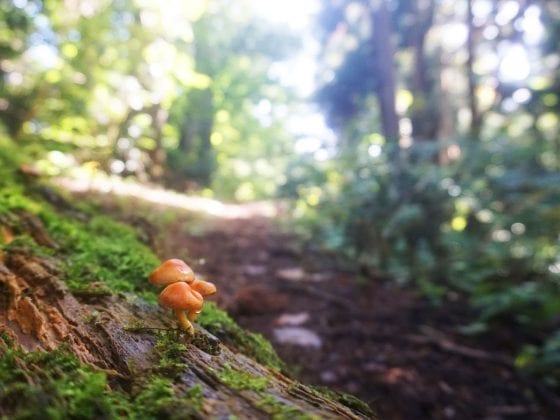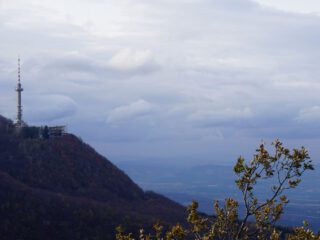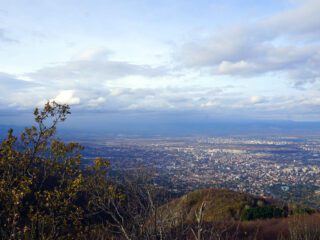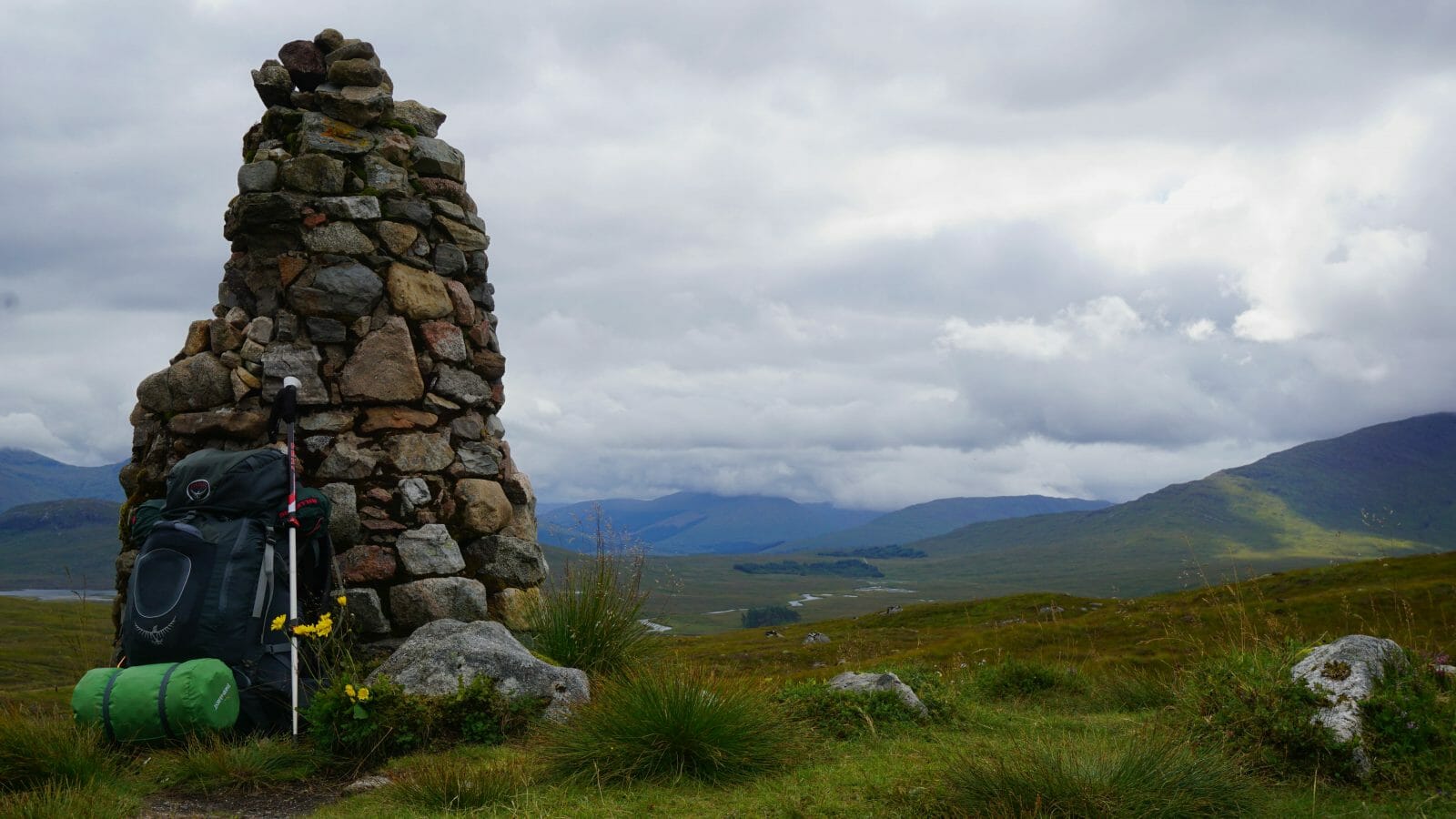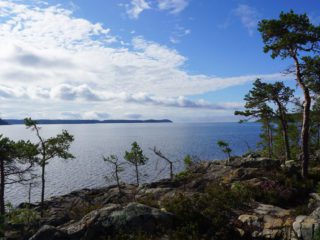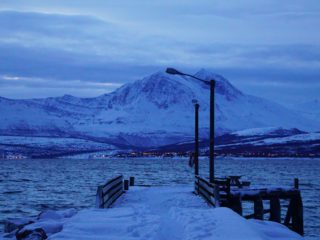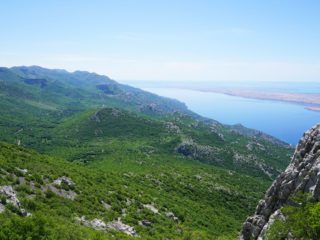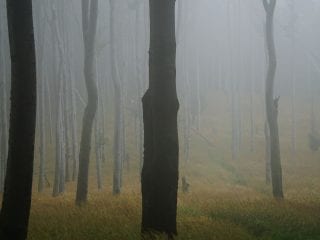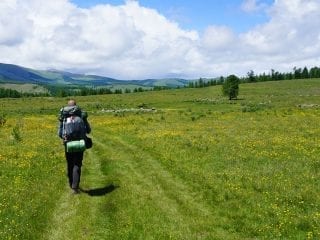At some point during my travels, I gave in to my Dutch roots by purchasing a bicycle and going on a cycling trip in Japan. Little did I know the joys, hardships, great views and pleasant surprises the Land of the Rising Sun has in store for anyone taking on its roads to look beyond its main urban centres.
It was just after dark when it started to rain. I knocked on the door of the first house I found with a sizeable patch of grass behind their shed. I had learned the necessary polite greetings, and it was up to Google Translate to help me explain my current predicament; there were few suitable campsites in the area, and I had failed to find one before dark. With the surrounding hills being covered in dense jungle unsuitable for my tent, I was resigned to knocking on doors and asking to camp in people’s backyards.
This desperate knock on a strange door would prove to be one of the greatest moments on this countryside cycling trip. As it turned out, they wouldn’t let me sleep outside since there were bears around, and they promptly invited me in for a home-cooked meal and a futon to sleep on in their living room, instead! The evening turned out quite lively as their four children clamoured for my attention and we all stayed up way too late due to excessive amounts of excitement and questions for the unexpected foreign visitor. Despite what people might say about the somewhat reserved Japanese cultural norms, their sense of hospitality should not be underestimated!

Iiyama to Niigata
As the example above illustrates, cycling in Japan allows you to see the country at a much slower pace. It allows you to really appreciate the unique things each little town has to offer, instead of zooming past a hundred of them at 300 kilometres per hour on a Shinkansen bullet train. From discovering shrines dedicated to local spirits and gods to sampling speciality foods and crafts unique to each (sub)region, experiencing Japan at a cyclist’s pace brings its own daily rewards, all the while keeping yourself comfortably far away from the main tourist trail.
I started my pedal-driven adventure in the town of Iiyama, in the Nagano Prefecture. This mountainous part of Japan is a great starting point for any bicycle trip, as it offers both strenuous climbs and more forgiving valley routes for experts and beginning cyclists alike. I strapped my tent to my frame, slung my backpack on my shoulders and set off to follow the Chikuma River valley northeast.
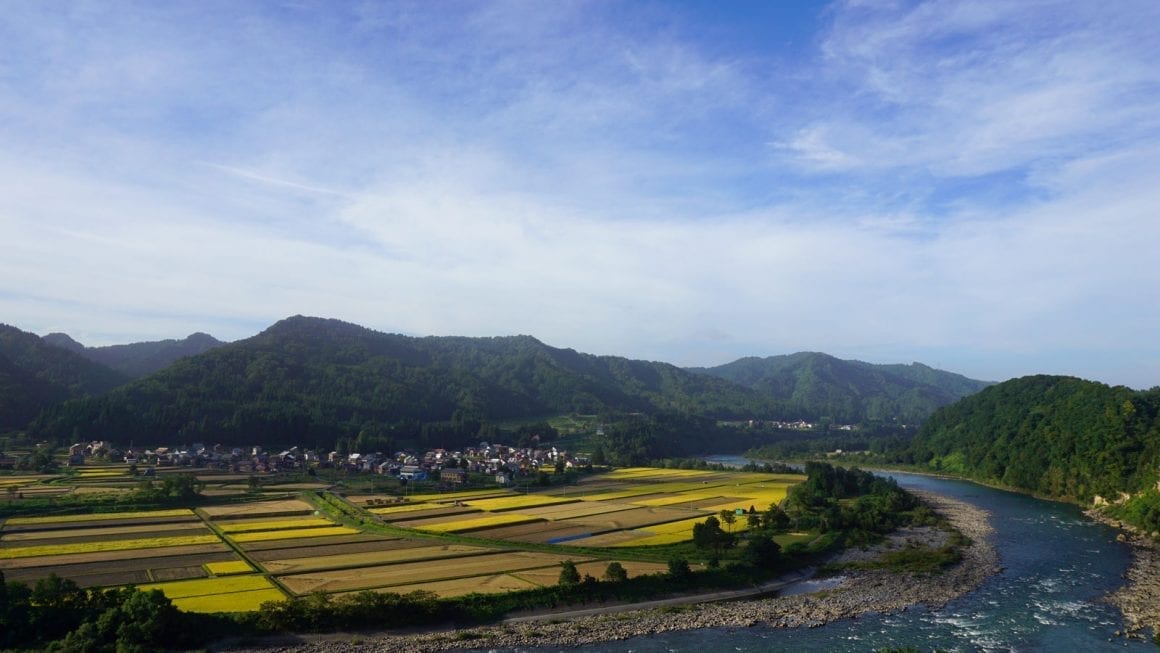
Even in late September, the weather was still as hot and humid as Japanese summers can be. And while October usually brings welcome cooler temperatures and endless autumn shades of brown and orange, it can also be an extremely wet period where the occasional typhoon can wreak havoc on the country and your cycling plans. Therefore, it is often recommended to go cycling in Japan during spring, from late April to early June. If you plan it right, you might even find yourself riding among cherry blossom in early May!
Running for the hills
I rode for the end of the valley, where the Chikuma river flows into its lower reaches and changes its name to the Shinano River. Here one enters the neighbouring Niigata Prefecture and the flatlands surrounding its eponymous capital city. Where most valleys only offer the options of an easy lower highway route or slow, steep and enervating mountain byroads, here your options for alternative routes start to open up more. Leave the monotonous highways to explore roads leading you along small villages and rice fields famous for their flavourful yields.

For the best experience, I recommend you stay near the hills and only cross the flatland’s inner urban landscape to get to the coast. Staying clear of Niigata’s urban belt not only allows for more scenic routes but also improves your chances of finding appropriate camping spots, should you be inclined to spend your nights in a tent.
With most of the country either covered in dense overgrown rainforest or cultivated into farmland, finding a camping spot can be difficult when you’re not carrying a hammock. Fortunately, wild camping is not illegal in Japan as long as you’re not trespassing on private property. As a pleasant result, cyclists carrying a tent will often find themselves camping in scenic parks overlooking valleys, near iconic cultural sites or even right next to highway rest areas with convenient access to bathrooms and shops.
Looking to go camping? I wrote a post on things to keep in mind when setting up your tent in Japan!

Coasting down the coast
After spending a day cycling around the area and encountering hidden gems like Nagaoka’s Yukyuzan Park and the Koshiji Maple Garden perched above the town of Raijkoji, I crossed the nearby hills and was treated to a clear view of the Sea of Japan beyond. After three days mostly spent cycling up and down mountain roads, the easy seaside roads offering expansive views of the water and coastal cliffs were a pleasant change of scenery.
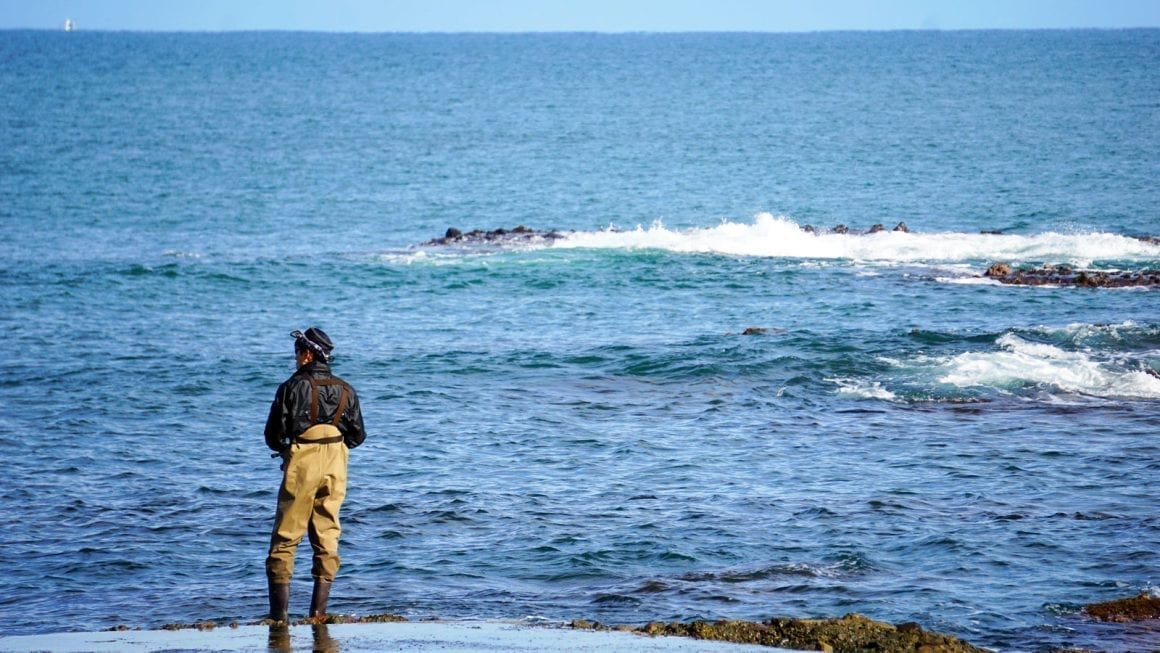
When compared to the previous sections, the road quality improves noticeably here. While cycling in Japan you will find most roads to be well-maintained, with a somewhat inconsistent road quality when leaving the main highways. And even though many Japanese ride their bikes on the sidewalks where possible, these are best avoided as they are primarily designed for pedestrians and are often riddled with curbs and gutters that can prove disastrous for your personal health. Take care when zooming downhill too, as there can be the occasional potholes, cracks and rough sections dangerous to cyclists riding at high speeds.
My favourite day on the saddle was probably when I found myself cycling through countless seaside towns at a leisurely pace, stopping often to sample local seafood dishes or to just take in the sights. I highly recommend taking your time here along the coast and avoid sticking to the main highways as much as possible.

Lakeside joys and hot water springs
The land opened up again as I came closer to Joetsu. Here you can either continue down the coast towards Toyama or follow my route, taking the road south underneath Mount Myoko to climb the pass leading back to the Chikuma River valley. This is probably the toughest part of this cycling route, as there is no easy alternative leading back into Nagano Prefecture. However, after a few hours of climbing your efforts will be rewarded with access to the many hot springs found around the town of Myokokogen, located a little above the col.
The best camping spots in this area can be found around Lake Nojiri, which is a great place to take it easy for a while. Tucked away in the Sakita mountain range, this scenic spot is a popular getaway for tourists and locals alike. With its wooden, western-style lodges and cabins it isn’t hard to imagine yourself in the American Northwest or Canada, instead of Japan.
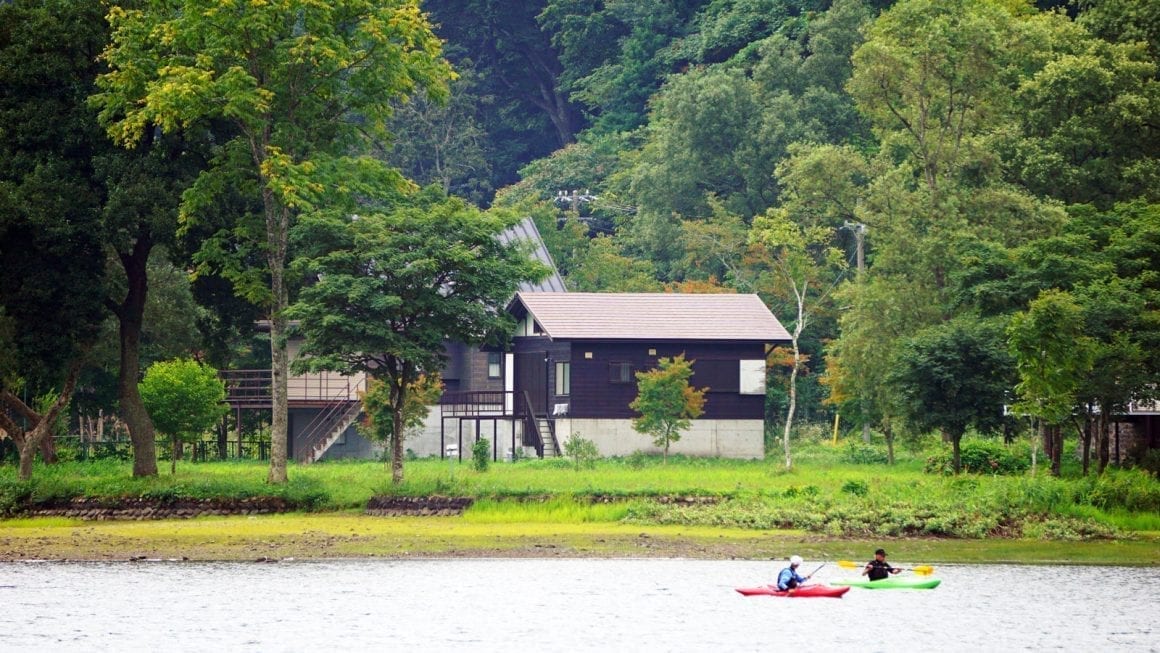
There are several ways to cruise down into the Chikuma valley from here, but the most interesting one leaves Lake Nojiri above its northeastern shores to lead you through a number of sheltered valleys, eventually ending up in the ski resort town of Madaraokogen. Leave the town along the main road, but don’t forget to stop at Madaraokogen’s edge to admire the wide views of the Chikuma valley and the Mikuni mountain range on the horizon.

After a quick downhill race, you’ll find yourself in Iiyama once more. From here you can ride on towards the southwest, where you can explore the rest of Nagano Prefecture. Or you can choose to take it easy and visit the nearby hot spring town of Nozawaonsen, which is probably one of Japan’s best kept local secrets. Famous in winter for its excellent ski slopes, this town offers no less than thirteen natural hot spring baths called onsen, all free to use! Outside of the winter season, this town has a relaxed, sleepy vibe to it, providing the perfect setting to relax in a steamy hot bath and recuperate from a memorable week of cycling in Japan!

